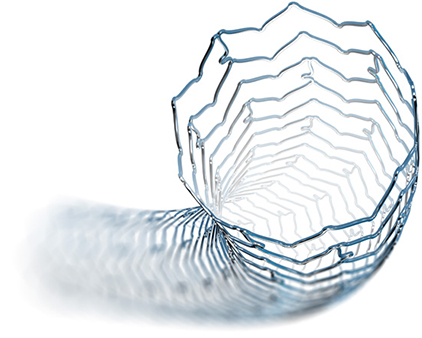 Register to receive a free Interventional Cardiology Devices Market Report Suite for U.S. 2018-2024 synopsis and brochure
Register to receive a free Interventional Cardiology Devices Market Report Suite for U.S. 2018-2024 synopsis and brochure
Abbott announced it received approval from the U.S. Food and Drug Administration (FDA) for XIENCE SierraTM, the newest generation of the company’s gold-standard XIENCE everolimus-eluting coronary stent system. XIENCE stents are among the world’s most-used and studied stents and have an exceptional safety record with low rates of complications. Design and technology advances in this generation of XIENCE include features specifically designed for the treatment of complex blockages that now account for up to 70 percent of cases.
“We developed XIENCE Sierra so that physicians can more easily deliver the stent even in challenging cases,” said Chuck Brynelsen, senior vice president of Abbott’s vascular business. “The updated design and improved deliverability mean doctors can access and unblock difficult-to-treat lesions with more flexibility and precision than other stents.”
Design innovations in XIENCE Sierra include a thinner profile, increased flexibility, longer lengths, and small diameters. The new stent and delivery system were specifically developed for the treatment of complex cases, including people with multiple or totally blocked vessels.
More than 8 million people worldwide have received a XIENCE stent since its initial regulatory approvals in the EU in 2006 and in the U.S. in 2008. Its unparalleled safety is supported in over 100 clinical trials and by 10 years of global real-world experience.
Abbott received Regulatory approval for XIENCE Sierra in Japan in April 2018, and CE Mark in Europe in October 2017.
About Coronary Artery Disease:
Coronary artery disease occurs when the arteries that supply blood to the heart become hard and narrow, leading to chest pain or shortness of breath and increased risk of heart attack. To treat coronary artery disease, interventional cardiologists may perform a percutaneous coronary intervention, a non-surgical procedure that uses a catheter inserted through an artery in the leg or wrist to implant a stent that reopens vessels and allow blood to flow.
About XIENCE:
XIENCE first received CE Mark in 2006 and FDA approval in 2008. Its safety profile is unparalleled with consistent low rates of stent thrombosis, even in complex cases. A special coating on XIENCE interacts with proteins in the blood to reduce the risk for blood clots in the stent. The XIENCE Sierra stent is implanted using a catheter that is inserted through the femoral artery in the groin or radial artery in the wrist.
About Abbott:
At Abbott, we’re committed to helping people live their best possible life through the power of health. For more than 125 years, we’ve brought new products and technologies to the world — in nutrition, diagnostics, medical devices and branded generic pharmaceuticals — that create more possibilities for more people at all stages of life. Today, 99,000 of us are working to help people live not just longer, but better, in the more than 150 countries we serve.
For Further Information
More on the interventional cardiology market in the U.S. can be found in a series of reports published by iData entitled the U.S. Market Report Suite for Interventional Cardiology Devices. This report covers the following market segments: coronary stent, coronary balloon catheter, balloon-inflation device, interventional coronary catheter, interventional coronary guidewire, coronary embolic protection device, coronary atherectomy device, coronary thrombectomy device, chronic total occlusion system, introducer sheath, coronary vascular closure device, diagnostic coronary catheter and guidewire, intravascular ultrasound (IVUS) and optical coherence tomography (OCT).
The iData series on the market for interventional cardiology covers the U.S., Japan, and 15 countries in Europe including Germany, France, the United Kingdom (U.K.), Italy, Spain, Benelux (Belgium, Netherlands and Luxemburg), Scandinavia (Finland, Denmark, Sweden and Norway), Portugal, Austria and Switzerland. Reports provide a comprehensive analysis including units sold, procedure numbers, market value, forecasts, as well as detailed competitive market shares and analysis of major players’ success strategies in each market and segment. To find out more about interventional cardiology device market data or procedure data, register online or email us at info@idataresearch.net for an U.S. Market Report Suite for Interventional Cardiology Devices brochure and synopsis.
 Register to receive a free
Register to receive a free